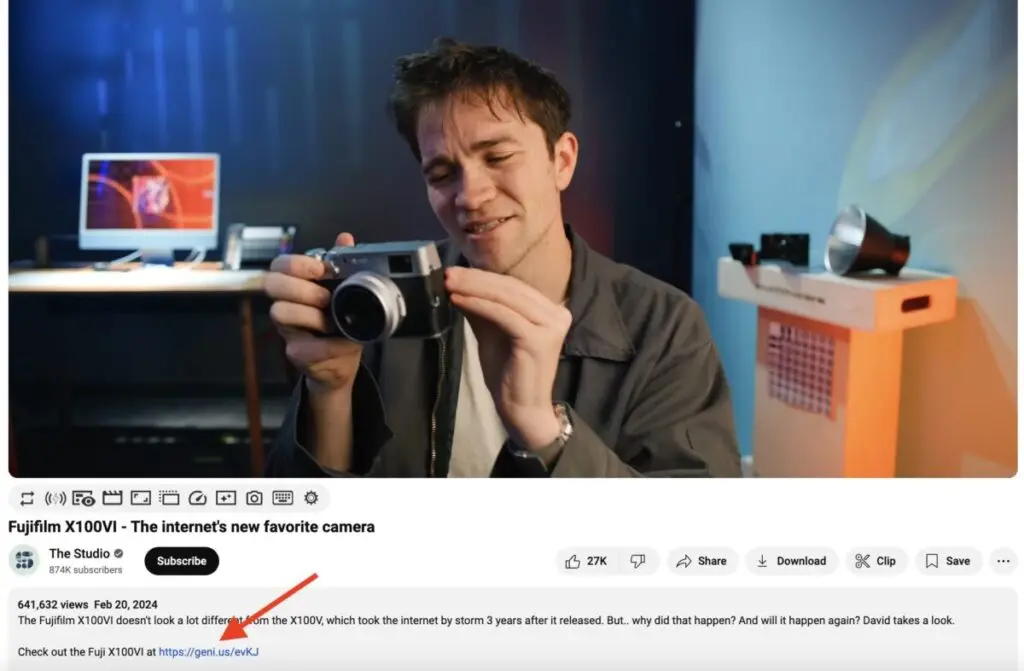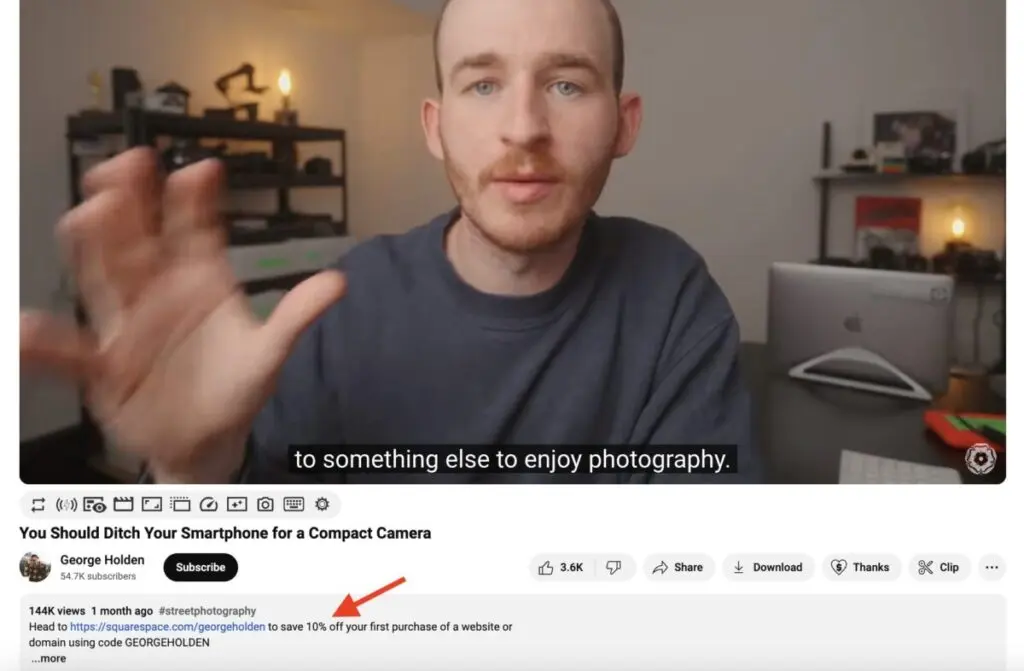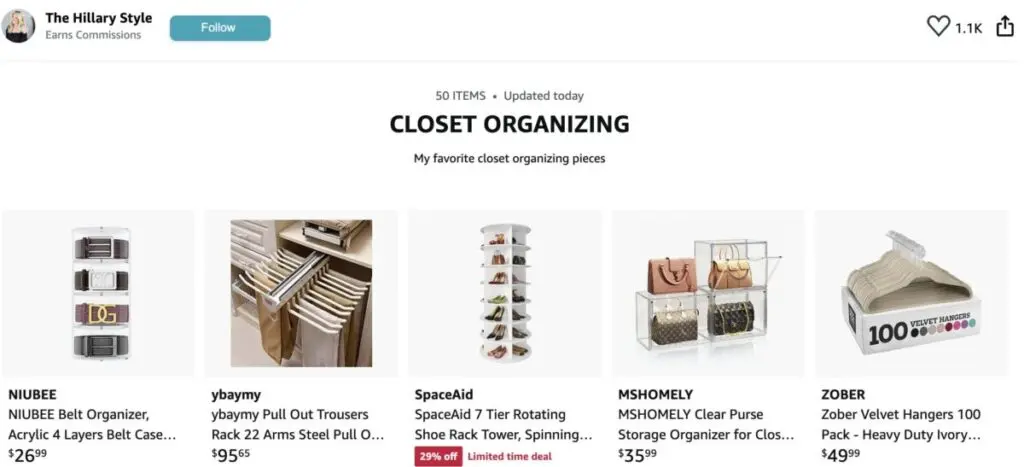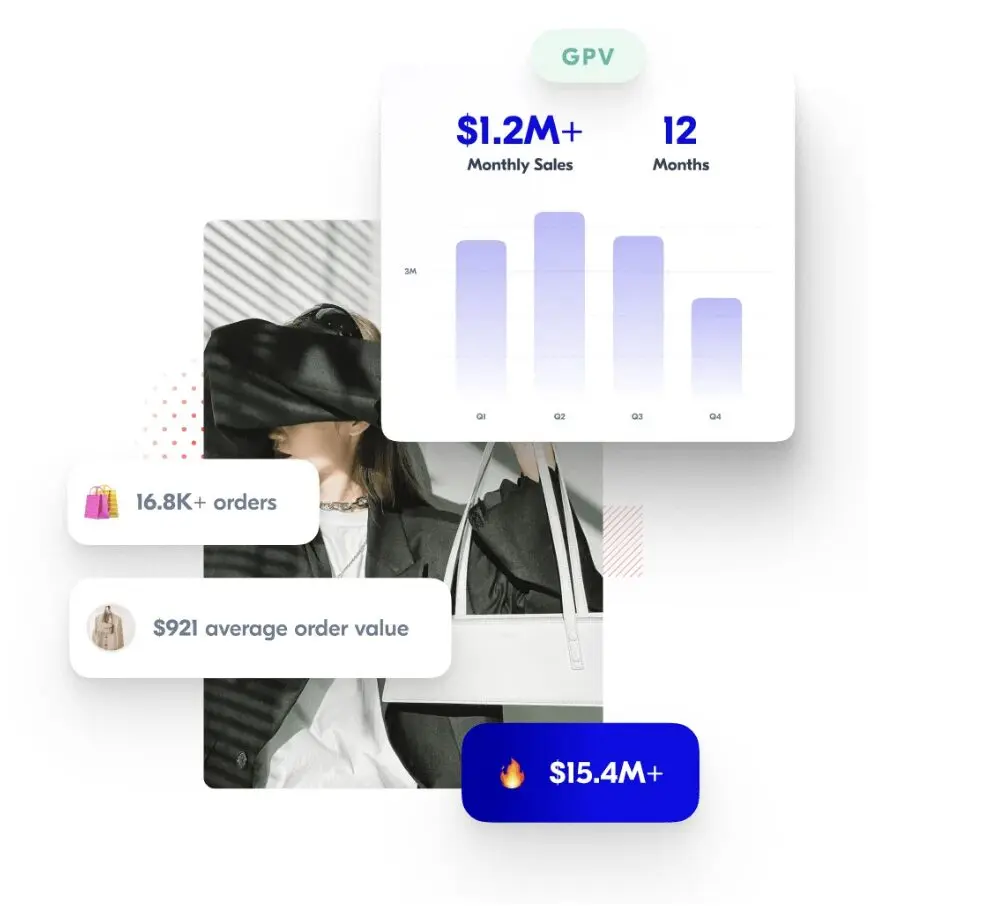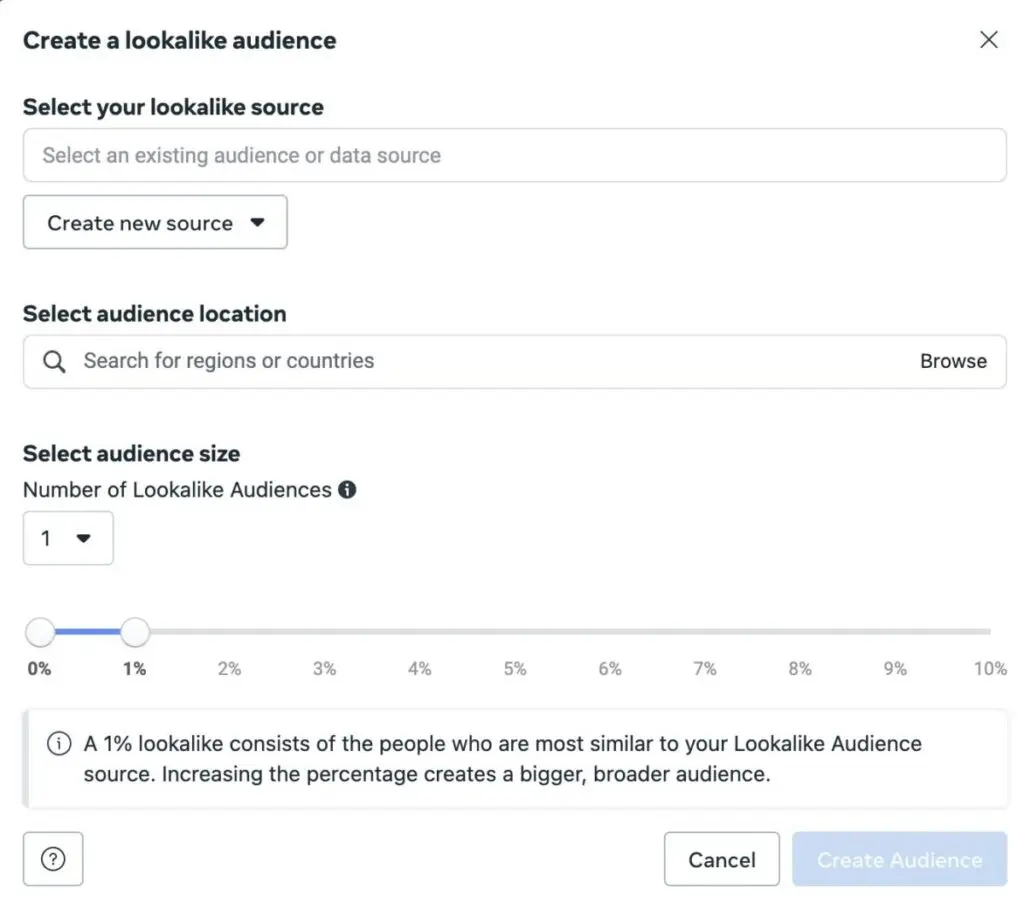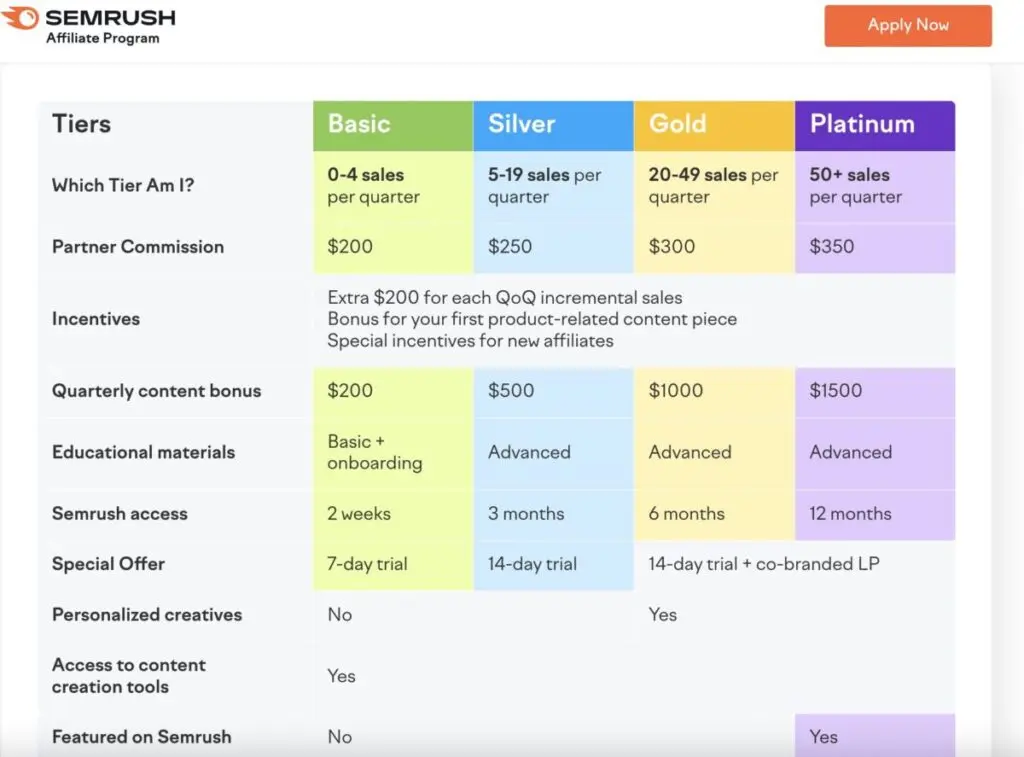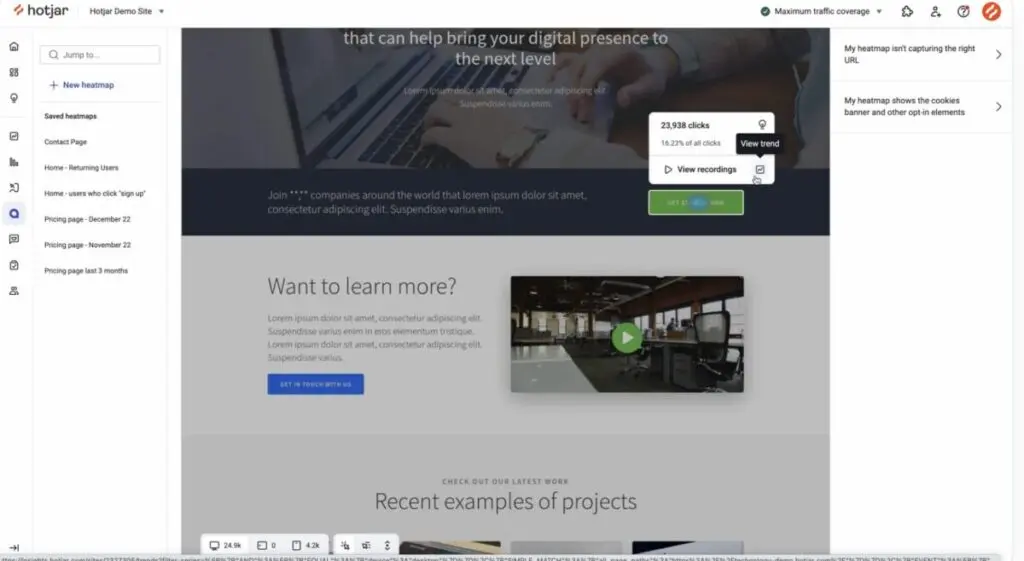Influencers have been known to help drive brand awareness and build trust with their audience. But many businesses are looking to drive real business impact beyond just brand awareness, which is where performance influencer marketing comes in. This involves taking a performance-oriented approach to influencer marketing so that you generate measurable results like sales and conversions.
With this approach, you could gain a significant edge over your competitors as a majority of brands still rely on brand awareness metrics to measure their influencer marketing impact. Our State of Influencer Marketing Benchmark Report found that although 85% of marketers find influencer marketing effective, over 54% measure this success by views, reach, and impressions. Only 22.1% measure success by conversions and sales.
Why Shift from Traditional to Performance-Based Influencer Marketing?
There’s no doubt that traditional influencer marketing is effective, especially when it comes to driving brand awareness. But there’s no telling if that awareness will eventually translate to sales further down the line. A performance-based model changes this by combining results-driven performance marketing strategies with the reach and sway of influencers.
There are three main ways in which performance influencer marketing differs from a traditional approach:
- Goals – While traditional influencer marketing typically aims to drive brand awareness, a performance-based model focuses on driving direct sales.
- Metrics – In alignment with this goal, metrics like views, reach, impressions, and engagement are used to measure success in traditional influencer marketing. However, conversion rates and sales are used for measuring success in performance influencer marketing.
- Payment Models – Traditionally, brands would pay influencers a flat rate as upfront fees for working with them. Performance-based influencer marketing uses commission-based payments to reward influencers based on the results they drive.
While many brands still rely on a traditional approach, performance-based models are quickly becoming a leading influencer marketing trend. In fact, performance-based payments are now the most common influencer payment method, with 49.6% of brands paying influencers a percentage of sales.
This shift to a performance-driven approach is largely owing to the real business impact that it delivers. For a start, performance influencer marketing allows better tracking and ROI measurement as campaigns are directly tied to sales and conversions. This allows for better accountability and transparency, making it easier to attribute performance to specific influencers.
Moreover, a performance-based model is more cost-effective since the payments you make are tied to tangible results. Influencers only get paid for the actual sales they help to generate, which means you’re not unnecessarily spending money on campaigns that don’t deliver results.
Considering these benefits, performance influencer marketing is particularly effective for ecommerce brands and direct-to-consumer companies with shorter sales cycles. Additionally, the cost-effectiveness will also benefit small businesses looking for ROI-driven marketing.
Key Metrics in Performance Influencer Marketing
The metrics needed for measuring the impact of your performance influencer marketing campaigns will vary depending on the goal you wish to achieve and the type of campaign. However, you’ll most likely report on the following key metrics.
Conversion Rate
How many people converted out of those who interacted with your campaign? You can measure your conversion rate by calculating the percentage of sales from the total number of link or ad clicks.
Cost Per Acquisition (CPA)
How much are you spending for each desired action? This metric helps you understand the value that your influencers are driving in comparison to the commission you pay them.
Click-Through Rates (CTR)
How many people are clicking on your ad or link compared to total impressions? This metric helps you understand if an influencer’s content is impactful enough to drive clicks. Even if it doesn’t always drive sales eventually, it’s a good way to track which influencers are able to influence people’s actions.
Return on Ad Spend (ROAS)
How much revenue are you generating for each dollar you spend on your influencer marketing campaign? This metric is particularly useful for campaigns where you amplify influencer content with paid ads.
Before launching your campaign, it’s important to lay out which of these metrics you’ll use to measure success. Make sure to align your KPIs with your business and campaign goals, so you’re focusing on the metrics that matter. For instance, if you’re running an initial A/B test campaign to see which influencer content to boost with paid ads, you can start by tracking CTR. You can then boost posts with the highest CTR to drive even bigger results.
Look for influencer analytics tools that come with sales attribution features and influencer payment tracking. This will simplify the process of tracking your campaign performance. Tools like LTK can even automatically attribute your sales and conversions to specific influencers. Meanwhile, Influencity is an excellent platform for measuring campaign costs against your results.
Strategies for Implementing Performance Influencer Marketing
Performance influencer marketing requires a little more than simple product placement. Your influencer collaborations should strategically be executed so as to drive action. Here are some of the most effective strategies for implementing a performance-based influencer marketing campaign.
Affiliate Programs for Influencers
This involves setting up an affiliate marketing program and recruiting influencers to participate. Influencers get a unique referral link, which they can promote however they wish — whether it’s through reviews or demos. They then earn a commission in exchange for every sale or lead generated through this link. This commission is usually a specified percentage of the sale.
These referral links make it easy to attribute your sales to specific influencers. So you can directly track sales from your influencer marketing campaigns. It’s also a low-risk approach since payments are directly tied to performance, which enables you to easily scale up or down your partnerships.
It’s important to look for an influencer marketing platform that comes with built-in affiliate marketing features. This will streamline the process of finding influencers and recruiting them for your affiliate program. It will also simplify steps like affiliate link creation, affiliate tracking, and sales attribution.
Make sure to define a commission structure that’s mutually beneficial. Commissions should be appealing enough to encourage more influencers to sign up for your affiliate program. You could even give them the opportunity to earn a higher percentage the more sales they generate. This gives them more incentive to actively promote their links and drive more sales for your business.
Pay-Per-Sale Partnerships
Brands can also engage influencers on a pay-per-sale basis, where their compensation is directly tied to every successful sale they help to generate through their promotion. With this type of partnership, the compensation is typically a fixed rate instead of a percentage of sales. Also, influencers are recruited on a campaign basis rather than as part of an affiliate program.
Since the influencer’s incentives are aligned with your brand’s sales goals, this model ensures that both parties focus on generating results. This is why it’s crucial to form partnerships with influencers whose audiences match your ideal customer profile. So you can ensure that your efforts are focused on influencers who have the potential to generate tangible results.
Additionally, it’s important to properly attribute sales to each influencer and compensate them accordingly. Set up trackable UTM links and integrate them with your Shopify or WooCommerce store so you can easily monitor and manage influencer payments. You’ll find various integrations like InsightIQ to help with this.
Performance-Based Discount Codes
One of the easiest ways to simultaneously drive more sales and track influencer-generated sales is through performance-based discount codes. Provide influencers with unique discount codes that they can share with their followers. In exchange for every purchase made using this code, the influencer earns a commission.
The promise of an attractive discount encourages more people to make a purchase, while the discount codes help you attribute sales to the right influencers. This makes it a highly popular strategy for implementing performance influencer marketing. You can integrate platforms like Rewardful with your ecommerce platforms to track the usage of these discount codes easily and accurately.
For this approach to work, however, it’s important to ensure that your discount structures are optimized to be simultaneously enticing and profitable. Additionally, make sure that the discount codes are highly visible so that people don’t miss the chance to take action. You may want to encourage influencers to share the codes through multiple methods (captions, in-video narrations, text overlay, etc.) and get more people to notice.
Revenue-Sharing Partnerships
Brands can also create revenue-sharing agreements that will allow influencers to earn a percentage of the sales they generate. While closely similar to affiliate marketing, the commissions are much higher than typical affiliate rates. This allows brands to form long-term influencer partnerships where influencers passionately promote products as they benefit from the brand’s success.
Revenue-sharing partnerships are particularly ideal for campaigns where influencers are recruited for co-branding or product development opportunities. Make sure to clearly negotiate revenue share terms and develop agreements that lay out payment structure, commission percentage, and partnership duration. It’s also important to maintain transparency when reporting sales data so influencers are in the loop about how much they’re entitled to earn.
Influencer-Specific Landing Pages
Setting up customized landing pages for each influencer’s audience is another great way to track traffic and conversions coming from your influencer marketing campaigns. Each landing page could display a selection of products that the influencer has curated, making it easy for their followers to find the products they’re looking for.
This is a great way to enhance personalization and create a smoother user experience since shoppers can find everything they need in one place. Moreover, it allows more detailed tracking so you can easily attribute conversions and traffic to the right sources.
For these landing pages to deliver a bigger impact, they should ideally be tailored to the influencer’s content style and aesthetics. This creates a seamless user experience that instantly connects the influencer’s page or website to yours. You can run A/B tests to optimize your landing pages so that they can drive more conversions. Don’t forget to integrate tracking tools like Google Analytics to accurately track sales generated through these landing pages.
Collaborative Giveaways with Purchase Incentives
You could also host social media giveaway contests where customers can get a chance to win something big by making a purchase or signing up for a service. Have influencers promote the contest to get your content in front of more people and drive more participation.
Keep in mind that there are legal complexities around giveaways that require purchases to enter. Make sure to offer alternative entry methods so that people can enter without making a purchase. It’s also important to set up tracking for purchase-based entries so you can properly attribute sales to the right influencers.
For these types of giveaways, it’s important to design appealing prizes with a much higher value than the cost of your products. This would give people an incentive to make a purchase.
Real-World Success Stories: Brands That Nailed Performance-Based Influencer Campaigns
Moonboon Drives >$1 Million in Affiliate Sales
Moonboon is a GOTS-certified company that produces functional and organic sleep accessories for babies. With rising marketing costs, the brand wanted to find targeted and effective ways to reach new and existing customers. So they leveraged tools like Shopify Collabs to recruit content creators and influencers into their Moonboon Ambassador family.
They took care to select influencers across Europe who wanted to help children sleep better. This resulted in growing their influencer community by over 300 creators across five key European markets.
With this ambassador family, Moonboon has generated more than $1 million in affiliate sales, which amounts to about 10% of their net sales. They also saw an average ROI of 6.5x from this performance influencer marketing strategy.
Farfetch Closes >$15.4 Million with Influencers
Farfetch offers a curated selection of luxury fashion products to customers all over the world. They made use of Upfluence to identify and recruit 1.2k relevant creators across 11 key markets. They ran an evergreen influencer program with Instagram as the main platform to reach their target audience and drive traffic.
Creators were assigned to publish five Stories at two key moments, offering a 10% promo code for new customers. Their Stories included a trackable swipe-up link to shop the promoted item. Farfetch closely monitored influencer performance and continued their partnerships with influencers who consistently drove an ROI of 5x or more.
With 16.8k new customers acquired, the company closed more than $15.4 million in gross transaction value in less than a year. This amounted to a return on investment of 8.2x with a customer acquisition cost of $112.
Tools and Platforms for Managing Performance-Based Influencer Campaigns
Every influencer marketing campaign could benefit from the right tools and platforms to simplify campaign management. With performance-based campaigns, it’s more important than ever since you need tools to help you create trackable links and discount codes, track traffic and sales coming from your campaign, and attribute results to the right influencers.
Ideally, you should invest in an influencer marketing platform that comes with built-in tools to manage all these aspects of your performance-based campaign. Look for platforms that have affiliate marketing features so you can seamlessly find influencers, recruit them, create custom links and codes, and track performance — all in one place. Check out our full list of influencer marketing platforms and influencer marketing tools to review your options.
Best Practices for Optimizing Performance-Based Influencer Campaigns
The main purpose of performance-based influencer marketing is to deliver tangible results. This makes it crucial to constantly optimize your influencer marketing campaigns so that they perform better. Here are a few best practices that you can apply to optimize your performance influencer marketing efforts.
A/B Testing Influencer Content
Run tests on different types of content to see what resonates best with the influencer’s audience. When you A/B test influencer content, you can identify which content formats and messaging drive the most engagement and conversions. You can then use these insights to fine-tune your content planning and develop campaigns that deliver a much bigger impact.
That means you won’t be wasting time and resources on content that doesn’t work. As a result, you can generate a much higher return on investment since your influencers are creating content that’s bound to perform well.
Start with a test campaign where select influencers create different content variations to test variables like call-to-action phrases, visuals, video length, and more. Then make the most of native social media analytics tools and Google Analytics to track the performance of these different variations. You can apply these findings to lay out campaign deliverables according to their most successful content.
Refining Target Audiences
Just like performance marketing relies on precise targeting, it’s important to refine your target audience for performance influencer marketing as well. Work with influencers to focus your targeting on followers who are most likely to convert. This is particularly important when you’re running ads to amplify influencer content, as you’ll want to showcase the ads to people who will find them relevant.
When you target people who are most likely to convert, you can drastically improve conversion rates. It also means that you can reduce wasted ad spend on followers who are unlikely to engage, thus generating a higher return on investment.
Collaborate with influencers to analyze their audience demographics. Use this to discover audience groups that are most engaged so you can refine your targeting accordingly.
Social media ad platforms also provide lookalike audience tools to display your ads to people who share the same characteristics as your existing customers. This means that your ad spend is focused on people who will likely find your ad relevant and are, therefore, more likely to convert. You can create a lookalike audience based on people who have already converted or are high-value customers.
Adjusting Incentive Structures Based on Performance
Not every influencer in your campaign will generate the desired results. At the same time, some influencers may exceed expectations. You'll want to keep working with the ones who perform exceptionally well so you can generate a higher return. Similarly, you may adjust your partnerships with underperforming influencers.
This is why you should constantly adjust your incentive structure so that influencers are rewarded according to their performance. Typically, this will involve increasing commissions or providing better rewards for those who consistently meet their sales targets. That way, influencers get an incentive to step up their promotion efforts and stay focused on your campaign goals.
You can create tiered incentive models that would allow influencers to earn higher commission rates as they reach specific sales or traffic milestones. Additionally, you can provide more rewards and bonuses to incentivize them for their good performance. For instance, Semrush has a tiered affiliate program that allows partners to earn higher commissions and bonuses as they make more sales each quarter.
Regular Reporting and Data Transparency
With performance influencer marketing, it’s more important than ever to work closely with influencers to optimize their performance. This is why you need to maintain transparency and regularly share performance reports with them. Provide them with detailed reports of the traffic and clicks they’re generating and the sales and conversions resulting from their content.
This keeps them informed about the impact they’re making, which can be an excellent motivator to keep them engaged with the campaign goals. Additionally, it helps them understand where they can make improvements and drive an even bigger impact.
Maintaining data transparency is one of the key steps to building trust with influencers. It also serves as a basis for performance feedback so they can adjust their strategies accordingly.
Use your influencer analytics platform to generate custom reports for each influencer. Highlight key metrics like clicks, conversions, and engagement rates so they can visualize their business impact. You can also schedule monthly check-ins to review this data and keep refining your tactics to improve performance.
Optimizing Landing Pages for Conversion
Even if an influencer’s content does a great job of enticing people and driving traffic to your site, a poorly desired landing page could prevent them from converting. This reduces the overall effectiveness of the campaign, as you’re missing out on potential conversions.
So if you’re running a campaign with dedicated landing pages, make sure they’re designed for maximum conversion. Start by improving page load speed so visitors don’t bounce after waiting a few minutes to view the page content. Also, ensure that the page is designed to display and function well across all types of devices.
You can also use tools like Hotjar for heatmap analysis to see how people are engaging with your landing page. Then build different page variations to run A/B tests on page elements like headlines, CTA buttons, imagery, and more.
Consistent Communication and Feedback Loops
There’s no guarantee that your influencers will start generating sales as soon as your campaign goes live. Some of their content and messaging may need a little adjusting before they can start converting followers. This is why it’s important to maintain an open line of communication with influencers and provide them with regular feedback on their content performance.
When there’s ongoing communication, influencers feel more invested in the brand’s success. It also gives them the information they need to quickly adjust their content according to feedback, which translates to better campaign performance.
In addition to sharing performance updates, make sure to schedule regular check-in meetings. These will give you the opportunity to address challenges and come up with solutions. You can also brainstorm new ideas, share brand goals, and align on upcoming content plans.
Overcoming Challenges in Performance Influencer Marketing
In spite of the numerous benefits of performance influencer marketing, it also comes with a few hurdles. Here are some of the key challenges you might face and how to overcome them.
Finding Influencers Willing to Work on a Performance Basis
Influencers are used to getting a flat fee payment for their work, regardless of whether their content drives revenue. While commission-based payments give them the opportunity to scale their income, they may be hesitant to work on a performance basis.
For starters, your payment structures should appeal to influencers. The promise of attractive commissions could encourage many influencers to agree to a performance-based partnership.
It’s also important to clearly communicate with influencers about their potential earnings so they can understand the value of working with you. Help them understand how much they could earn based on their current performance stats and the past earnings of other influencers you’ve worked with.
Additionally, sweeten the deal with other non-monetary benefits that might entice them to work with you. This might include free products, exclusive previews, and other experiences that make the offer appealing enough even without performance-based payments. Don’t forget to clearly outline all these payment and incentive details in your contracts to avoid legal issues further down the line.
Challenges with Attribution
Brands may also find it challenging to attribute results to the right influencers. It can be particularly challenging if conversions are coming from multiple channels. Without proper attribution, you may be unable to calculate accurate payments and appropriately reward influencers for their contributions.
This is why you need influencer marketing tools that can integrate with your sales channels and provide you with comprehensive tracking data. You need to create affiliate tracking links and discount codes that will simplify the sales attribution process. So regardless of the traffic source, the conversions can be properly attributed to the right influencers as long as the right links or codes are being used.
Maximize Returns with Performance Influencer Marketing
Performance influencer marketing ensures that whatever you’re investing into your influencer marketing campaigns eventually translates to tangible business outcomes. Make the most of the best practices and strategies outlined above to generate massive returns on your influencer campaign investments.



